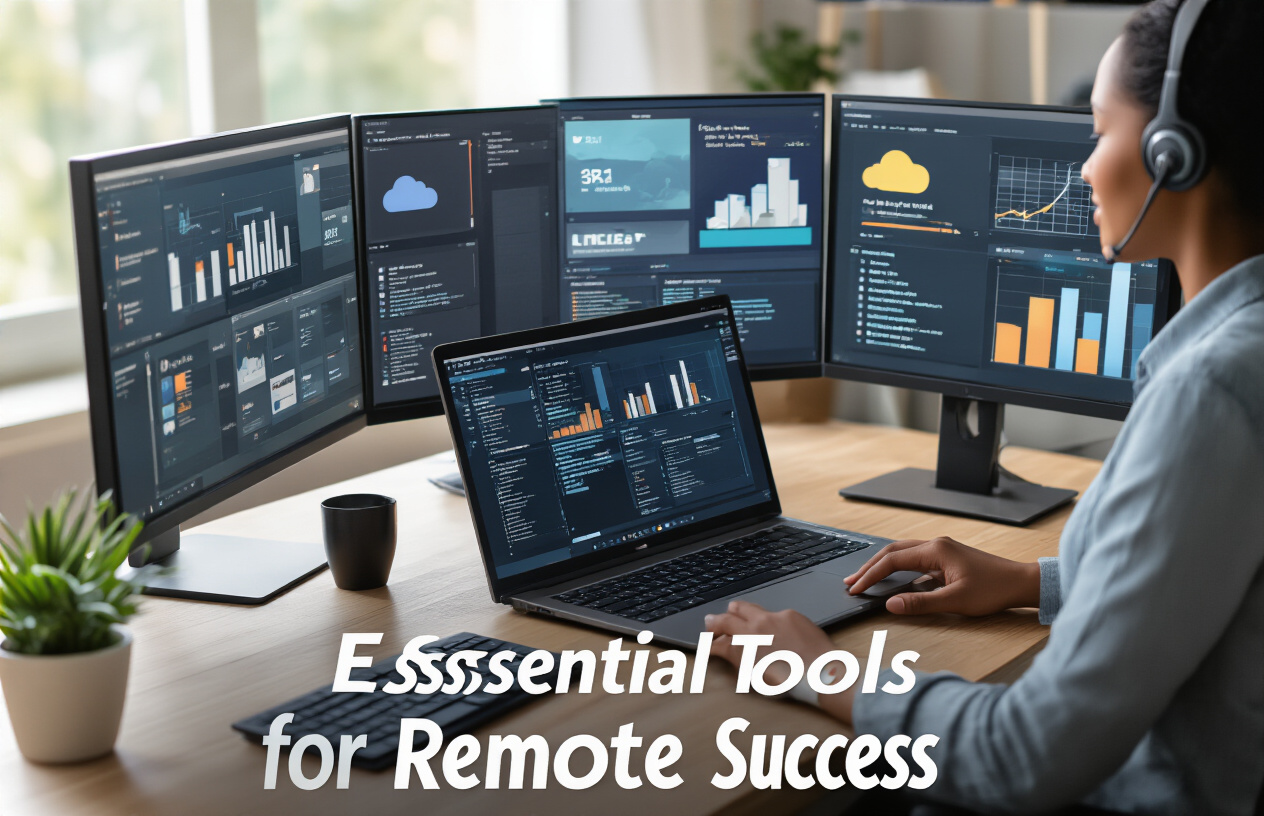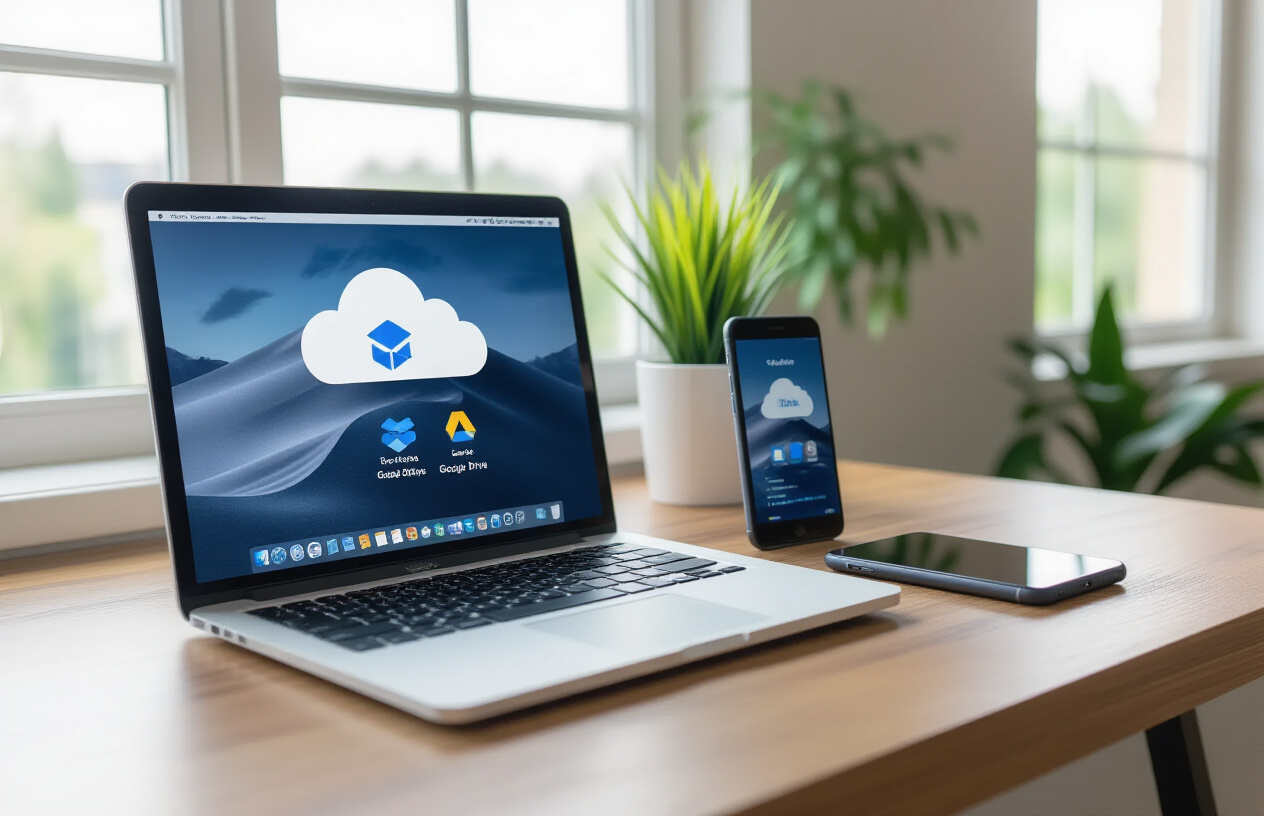
Ever tried explaining to your boss that your Wi-Fi crashed while the neighbor’s dog was howling like a banshee during your client call? Remote work chaos is real, folks.
The difference between remote work survival and remote work mastery? The right software tools for remote workers in the USA. Period.
I’ve tested dozens of tools during my five years of working from my kitchen table (and occasionally, let’s be honest, my bed). Some were total disasters. Others completely transformed my productivity.
But here’s what nobody tells you about remote work software: the most expensive options aren’t always the best, and the tools everyone raves about might be entirely wrong for your specific workflow. Want to know which ones actually deliver?
Essential Hardware for Productive Remote Work
High-Performance Laptops and Desktops
Your remote work setup starts with a powerful computer. Choose a laptop with at least 16GB RAM and an i5/Ryzen 5 processor for multitasking. Desktop workers should invest in a quality CPU and graphics card if your work involves design or video editing.
Professional Monitors and Displays
When staring at screens all day, your eyes deserve the best. A 27-inch monitor with blue light filtering at 1440p resolution hits the sweet spot between screen real estate and clarity. Dual monitors can boost your productivity by 42%.
Peripherals and Accessories for Comfort
Your body will thank you for ergonomic peripherals. A mechanical keyboard with wrist support, an ergonomic mouse, and a headset with noise-cancellation are must-haves. Don’t forget a comfortable chair that supports your back during those long Zoom meetings.
Data Management Solutions
Protect your work with reliable storage options. An external SSD provides fast access to large files, while a NAS system offers home backup security. Pair these with physical solutions and cloud storage for a bulletproof data protection strategy.
File Sharing and Cloud Storage
A. Microsoft 365 and OneDrive
When working remotely, you need reliable file storage that’s accessible anywhere. Microsoft 365 bundles OneDrive with 1TB of cloud storage and familiar Office apps. You can easily share documents with teammates, collaborate in real-time, and sync files across all your devices without worrying about version control.
B. Google Workspace and Google Drive
Google Drive gives you seamless collaboration tools that make remote teamwork a breeze. With Google Workspace, you’ll get powerful real-time editing capabilities, intelligent file organization, and tight integration with Gmail and Calendar. Your team can simultaneously work on spreadsheets, documents, and presentations without sending files back and forth.
C. Dropbox for Team Collaboration
Dropbox stands out for its intuitive interface and robust sharing features you’ll appreciate daily. You can create shared folders for projects, set precise permissions, and track file changes effortlessly. Its Paper feature enables collaborative documentation, while the smart sync feature saves precious space on your device by keeping files in the cloud.
D. Secure Document Sharing Practices
Protecting sensitive information should be your priority when sharing files remotely. Always use password protection for confidential documents, enable two-factor authentication on your cloud accounts, and regularly audit who has access to your shared folders. Consider setting expiration dates on shared links to maintain control over your data long-term.

The digital landscape for remote workers in the USA has evolved significantly, requiring a carefully selected toolkit to maintain productivity and efficiency. From communication platforms that bridge distances to robust project management solutions that keep teams organized, the right software tools make all the difference in a successful remote work environment. Equally important are secure file sharing systems and comprehensive security measures that protect sensitive data while working outside traditional office settings.
As you build your remote work setup, remember that the perfect combination of tools will depend on your specific role and industry requirements. Start by implementing the essentials we’ve discussed, then gradually customize your digital ecosystem to enhance your particular workflow. With the right software arsenal at your disposal, you can enjoy the flexibility of remote work without sacrificing productivity or professional growth.










